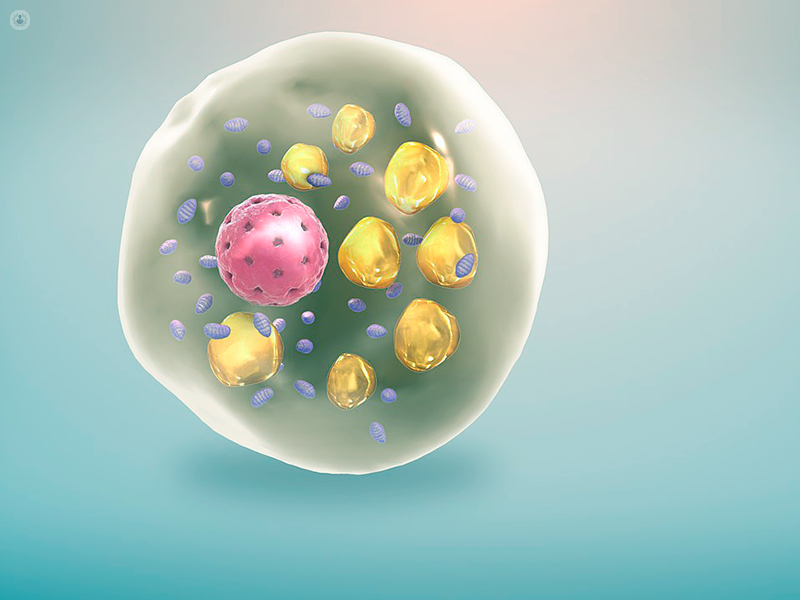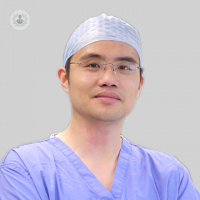Lipogems: a patient guide to fat cells for knee pain
Escrito por:If you struggle with cartilage damage in your knee and would like to avoid surgery, then regenerative medicine is an exciting new field of treatment to try out. Through regular injections you may be able to regenerate the cartilage in your knee and reduce pain considerably. In this brand new series, we asked regenerative medicine specialist Professor Paul Lee to explain the various treatment options on offer, and today’s focus is on Lipogems – the injection of fat cells into the knee.

How did fat cell injection emerge as a treatment for knee joint injury?
Fat transfer is a well-recognised technique in medicine, and is very popular in plastic and reconstructive medicine.
Many laboratory studies shows if fat is processed correctly, they contains a very high amount of ‘Medicinal Signalling Cells’ (MSC). The concentration of these cells is a thousand times greater in fat than in bone marrow concentrate.
MSCs stimulate and direct the cartilage cells to a regenerated and repaired mode. The fat itself does not turn into cartilage, but it helps to modulate the environment.
There are published studies to confirm that fat injections can improve the quality of the cartilage, and reduce pain significantly in the knee. Not all fat cells injections at same – the key is down to processing and of course the indication of use.
What kind of knee conditions can fat cells be used to treat?
Fat cells treatment work with most knee conditions that require healing, regulation, and regeneration. Typically these conditions are:
- cartilage damage
- certain types of meniscus damage
- certain types of ligament injury
- early-stage osteoarthritis.
Fat cells injection can also help to reduce pain in severe osteoarthritis. The MCS Cells will bind to the pain receptor within the knee joint and give the patient symptomatic relief. At this stage the fat cells are used as a pain medication instead of as a regenerative technology.
Can it be useful to combine Lipogems with other treatments?
Lipogems is one of the ways that we process fat, but there are different techniques out there and different instruments designed to process fat and produce different results.
Fat cell injections can be used in conjunction with other regenerative treatment and sometimes it depends on the environment and the specific conditions. For example, hyaluronic acid or platelet-rich plasma can be used to enhance the effect from fat cells. Sometimes we use fat cells to enhance other cartilage cell therapy such as autologous chondrocyte implantation. It is works on most joints – not just the knees.
What’s the current evidence base for this treatment?
There are good clinical safety reports on the use of fat cells to treat knee pain and osteoarthritis.
In the recent International Cartilage Repair Society 2018 meeting in Milan, many clinical results has been presented to show it can improve a patient's function as well as reduce their pain. Fat cells injections have so far helped over 30,000 patients worldwide.
What should patients be aware of when choosing a clinic that offers Lipogems?
Fat cells and injection can be a very simple easy treatment with great results, as long as the patients and clinicians understand the purpose of the treatment and the condition that they were planning to treat.
The way that the cells processed is the key to the fat cells treatment . Lipogems offer a great way to massage the cells to help simulate the MSC within the fat. One of the most common side-effects following Lipogems is swelling and bleeding around the fat harvest site at the abdomen, but there are techniques that the clinician can use to reduce these side-effects.
Knowing when to augment the fat cells with other substances is also very important . This will also help to improve the chance of success and longevity of this treatment.
It is important for patients ask questions and be sure their clinician explains to them why their surgeon chose to process the fat cells a certain way.
Finally, be sure to be followed up in six to eight weeks’ time to assess the results, because there is a window of opportunity to augment these fat cells within that period.


